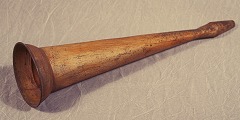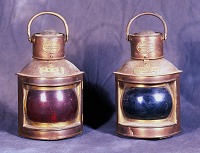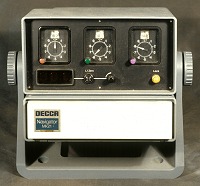Back to start | The Weather | Next
Fog

Fog is another problem for fishermen. It can occur when the weather is calm. Early fishermen depended almost exclusively on sight to navigate. They watched for landmarks such as prominent features on the coast. They could also fix their location using the position of the sun or stars. However, when visibility was reduced by fog, they could not use these methods. When the fishermen could not see, they risked getting lost in the open sea or colliding with other vessels. Even at close quarters, fishermen used visual signals to warn other boats not to sail too close to their nets when they were fishing.

Various pieces of equipment help the fishermen find their way in foggy conditions. A simple device was the foghorn. This was a tin trumpet that fishermen and sailors could use to warn other vessels of their presence. It helped to avoid collisions. Foghorns gradually became more sophisticated and modern examples are electrically powered. Lighthouses provided another important way of warning boats of natural hazards. They were positioned around the coasts and on rocky outcrops. Lighthouses were fitted with a visual signal in the form of a powerful light beam. The light intensity was concentrated many times by mirrors or lenses. Each light had a different signal so that seamen would know where they were. When it was misty, a horn could also be sounded.

From the middle of the 19th century the law stated that fishing boats also had to show lights when they were at sea. They had to show a green light on the starboard, and a red light at the port side of the boat. A white light had to be displayed at the masthead. Sometimes the fishermen did not show these lights, as they believed that too many lights scared away the fish.

The most important developments in navigation have occurred in the 20th century. These are the development of radio, radar and satellite navigation systems. They can be used as a back up when visibility is good. In poor conditions they can also be used exclusively to navigate. Good training is needed in the use of this equipment and it must be used with care.
Back to start | The Weather | Next